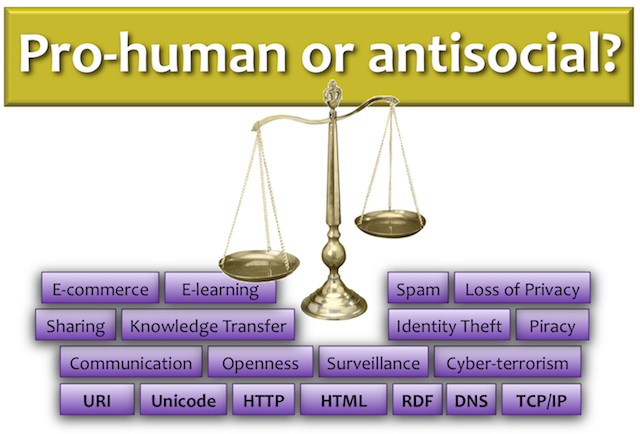
We use data every day to find out if transport systems are running on time, look for doctors and dentists, and find out about house prices and crime rates in different areas. Linking different types of data together makes it all the more powerful, and this can only be done through sharing information on the World Wide Web.
Last year the Prime Minister, Gordon Brown, asked professors Nigel Shadbolt and Sir Tim Berners-Lee, of the School of Electronics and Computer Science, to help transform public access to government information. As world- leading experts in the field of computer science, they have the know-how to make this work: Sir Tim is the inventor of the World Wide Web and Nigel a leading authority on the Semantic Web. They are co-founders of the Web Science Trust and Directors of the Web Foundation, both organisations devoted to promoting our understanding of the Web and its impact on society. The two professors are also leading the new £30m Institute for Web Science, a collaboration between the universities of Southampton and Oxford set up in March with funding from the UK government’s Department of Business, Innovation and Skills. In addition, Sir Tim is a Professor at Massachusetts Institute of Technology in the USA, where he also directs the World Wide Web Consortium that establishes the standards enabling the Web to run free of proprietary interests.
Public empowerment
Nigel and Sir Tim had a key role in the development of data.gov.uk, a website that allows people to view public information, with the ability to combine different threads of data and analyse them in innovative ways. Launched in January 2010, the data.gov.uk site was developed in just six months, with Nigel and Sir Tim working closely with a small group of technical and delivery experts, with leadership from the Cabinet Office. An important part of the site’s development was the release, after only a few months, of a test site that computer programmers and developers could use, comment on and help improve. Data.gov.uk was then launched to the public in January as a work in progress. It was built with very modest resources and uses open-source software.
Data.gov.uk contains almost 3,000 sets of data from across government about all aspects of our lives, ranging from information about education and traffic, to tax and crime. All the data is anonymous. It has all been collected, and has been paid for by the taxpayer already. The data has been released on data.gov.uk in a format that can be reused by any individual or business to create innovative new applications. These include giving information on house prices, local schools, amenities and services, or access to local hospitals. There is even a mobile phone application that lets you know the current anti-social behaviour order (ASBO) rate for your area.
The data.gov.uk site has been favourably compared to the US version, data.gov, which was introduced last year by the Obama administration and also offers open-access data to the public.
Mashing up the data
The ethos of data.gov.uk is to encourage people to be inventive and combine the different types of government information in innovative ways. This enables the creation of useful practical applications that go beyond what we could do with single, isolated sets
of data.
With blogs, forums and other ways to share ideas, visitors to the website are actively encouraged to get involved and add their ideas for ‘data mashups’. These are novel ways of combining different sets of data, and great examples of collaborative working in action. For example, a mashup combining addresses of local schools and their league table results could form a useful mapping tool for parents and school-age children who want to find out where the high-achieving schools are in their area. Other ideas posted on the website include a map showing where all the CCTV cameras are in the UK and an application that generates shopping lists based on foods ranked by the Food Standards Agency’s ‘traffic light’ system.
Sir Tim has long been an advocate of the release of data from public sources and for inspiring people to share their data in this way to promote innovation. “Government data should be a public resource. By releasing it, we can unlock new ideas for delivering public services, help communities and society work better, and let talented entrepreneurs and engineers create new businesses and services,” he says.
The website aims to change the culture of Whitehall and town halls so that data is seen as public property. Nigel comments: “Making more public sector information and data available is crucial if we are to exploit the innovative talent available to us in this country to produce really outstanding applications that have social and economic value.
“The vision is that citizens, consumers and government can create, reuse and distribute public information in ways that add value, support transparency, facilitate new services and increase efficiency. It is a job that is never going to be entirely finished; governments are always collecting data.”
Creating links to unlock innovation
The ethos of discovery of data.gov.uk is underpinned by the ideas behind the Semantic Web, which is evolving from the World Wide Web. The brainchild of Sir Tim and the major area of Nigel’s research, the Semantic Web enables data to be linked in imaginative new ways. Just as people add value to the familiar web of documents by creating links between pages, it is also possible to add value between data sets using a range of semantic technologies. The ability to link (or mash up) different data sets provides new information and new ways to access it.
Sharing raw data allows scientists to ask questions no one has asked before. “It’s essential that data is ‘unlocked’ and put onto the web so that the world’s biggest challenges can be addressed by scientists working together across different disciplines,” says Sir Tim. “A lot of the knowledge of the human race is currently sitting on private databases and not shared. We urgently need to move away from this ‘siloed’ thinking.”
Democracy in action
Nigel is now leading a panel of experts, which includes local government chief executives, information technology experts and entrepreneurs. They will work closely with key and relevant organisations to help improve local public services and empower citizens. Over a period of two years, the panel will aim to advance understanding of why the release of local public data is also important and how it can be used for the benefit of the public. This work will also feed into the continued development of the data.gov.uk site for all public data.
The website has been warmly received. Referring to the achievement of data.gov. uk, the Prime Minister, Gordon Brown, has commented: “Already as a result of the Berners-Lee–Shadbolt initiative a transformation is at work. A myriad of applications are being developed on the web by citizens for citizens – new websites on health, education, crime and local communities – that inform, enrich and enliven our democracy. It is truly direct democracy in action.”
For more information about the project, visit www.data.gov.uk
[This article originally appeared in the University of Southampton “New Boundaries” magazine, issue 10, May 2010.]

 Tom Standage’s book “The Victorian Internet” describes the development of the telegraph – the use of then barely-understood scientific phenomena, applied by nineteenth century chancers and opportunists to achieve the unthinkable goal of instantaneous trans-global communication. Perhaps this is not unlike the story of the Web’s development and takeup?
Tom Standage’s book “The Victorian Internet” describes the development of the telegraph – the use of then barely-understood scientific phenomena, applied by nineteenth century chancers and opportunists to achieve the unthinkable goal of instantaneous trans-global communication. Perhaps this is not unlike the story of the Web’s development and takeup?